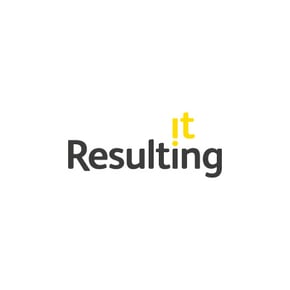If you've been around SAP programmes for any length of time you'll know all about RACIs (or RASCIs - don't worry, we'll get into it).
But did you know a RASCI can be used for more than describing who's doing what?
Follow the advice in this blog and you will transform your RASCI from PMO paperwork into a powerful tool for communication, adoption, and project planning on your SAP S/4HANA migration project.
1. Include the S in your RASCI - Supporters matter on S/4HANA programmes.
So is it a RACI or a RASCI - and why does it matter?
The elusive S in RASCI stands for supporter. Supporters are the people who help the responsible person (R) complete the task.
People omit supporters from their RASCI as they think a RASCI is about defining who's managing parts of the S/4 programme - decision-making, budgets, timelines, etc. For those people, who is doing the work can be a secondary concern.
And there is some logic to that - a key objective of the RASCI is to define ownership around those big make-or-break aspects of an S/4HANA programme.
But including supporters in your RASCI matrix has massive benefits and turns it into a powerful planning and communication tool.
You see, while the high-pressure decision-making of the programme sits with your Responsible and Accountable people, your Supporters are the people in the trenches doing the day-to-day work.
Knowing who these people are and what you need them to do is vital when it comes to creating an accurate project plan - so including them in your RASCI is a no-brainer.
Defining support requirements early on sets realistic expectations for the business on how much of their capacity you'll need, it helps you budget more effectively with your SI, and it reveals any dependencies that need to go into your programme plan.
In short, it keeps everybody happy.
"But surely this is what consulted means - people who are involved but don't make decisions?" you might ask.
This is a common mistake - and it can be a critical error. Consulted means someone is asked for their knowledge, advice, or opinion. It doesn't mean they'll be doing the work.
For example, you might Consult a call centre manager on what training their call centre team needs - and they'll happily give you a few hours of their time to help.
If you then turned round and said "thanks - now develop and deliver that training to your 200 staff" they'd be rightly annoyed.
This is the difference between consulted and supported. Consulted means you take their input. Supporting means they help do the work. And it can mean many days' effort of difference.
It's a vital distinction in resource planning and another good reason to keep the S in your RASCI.
2. Accountability - There can be only one in your S/4HANA RACI
That's right - when it comes to S/4HANA programme management there can be only one.
But don't worry, we're not talking about a Highlander battle to the death between you and your SI (although SAP projects feel like that sometimes).
We're talking about accountability.
When you're assigning accountability within your RASCI it's imperative that one - and only one - person is accountable for each deliverable.
But why is this? A problem shared is a problem halved, right?
Well, that's what your responsible, consulted and supporting parties are for. Many people will be involved in delivering the items on your RASCI.
Accountability isn't about who's doing the work so much as who's making the ultimate decision about that deliverable, and whose job it is to make sure the work is completed on time, on budget, and on value.
And it makes sense that there should only be one. After all, there's no passing the buck when there's only one name held accountable.
So who should you make your accountable person? Well, they need the authority and capability to make a decision and be comfortable with that decision - and it might not always be the obvious person.
We often find that a programme sponsor makes a good accountable person even if they're not that close to the day-to-day running of that part of the business. That's where the responsible person comes in - so your Accountable and Responsible people must work together closely and see eye to eye.
3. From RACI to S/4HANA plan and back again
One of the reasons it's important to add Supporters in your RASCI is that it helps to flush out dependencies and effort that should go into your plan.
Need 10 business people for a week to support your UAT? That's the kind of info your RASCI flushes out that is vital to include in your programme plan if you want to minimize delays and business disruption.
But the conversation doesn't stop there.
The first iteration of your RASCI will likely provide a lot of information that needs to go into your programme plan - but your programme plan itself will likely create some new roles and responsibilities that should go into your RASCI.
So what's our top tip? Keep your RASCI as a living breathing document that gets updated as your programme plan matures.
All too often people treat the RASCI as something finite that you create before you start your programme - when it should be a single version of the truth you keep up to date throughout the life of your programme...
And beyond (which we'll get into later).
4. Know who’s responsible for your S/4HANA RACI
So now you know you'll be keeping your RASCI up to date - who's job is that going to be?
The RASCI is an important document as part of your programme governance, and it sits across many business areas and workstreams - so the obvious candidate to own the RASCI is the PMO.
But your PMO can't be everywhere at once, and they won't be in all of the meetings where decisions are made that can affect your RASCI.
That's why it's important to involve your Responsible people in keeping the RASCI up to date for the parts of the programme they're involved with.
They are the people who will be doing the work outlined in the RASCI.
And, they'll be the first to know if they need more supporters, if someone new needs to be Consulted or Informed about their work, or if a new item needs to be added to the RASCI.
This can be a tricky thing to get working on your programme. It's a real cultural shift to get people to take responsibility for their part of the RASCI.
If people see the RASCI as a PMO tool and a PMO's responsibility they won't be on the lookout for things that need updating.
To get your responsible people involved in RASCI upkeep, you need to sell them on the benefits of it. Need more people to support the work you're doing? Then you need to add it to the RASCI. Stakeholders aren't hearing about the great work you're doing? Then add it to the RASCI.
Once Responsible people feel the benefit of keeping the RASCI up to date, you'll start to see that cultural shift on the programme.
In short - yes the PMO owns the RASCI, but they'll get the best results if they can motivate Responsible people to keep their items up to date.
5. A RACI for S/4HANA go-live and beyond
So you've made it to the end of your S/4HANA programme - your RASCI is no longer required, right?
Everyone in the SAP industry has spent so much of the last few years thinking about S/4HANA migration it's easy to forget that go-live is just the beginning - now you've got to run the system for the next 10 years.
But how do you know who's going to run your S/4HANA system?
A common problem SAP customers face is that they reach go-live and their SI leaves the programme, taking a massive chunk of skills and systems knowledge with it.
That's why we recommend you build a RASCI for this crucial transition period in your project lifecycle.
Getting an inventory well in advance of who will be leaving the programme after go-live and who is going to replace them is key for a smooth handover from SI to the in-house team or AMS provider.
Define the roles and skills required in your internal team well in advance of your SI leaving. That way you'll have time to focus on knowledge transfer from your SI to your internal team while you still have them around - and make any new hires if necessary.
Our SAP Success Report shows that adoption is the #1 factor in SAP programme success. In short, if people don't use your new system you won't feel any of the benefits.
Ensure you've got a team ready to deliver that value and embed the new system with a dedicated RASCI for life after go-live.










